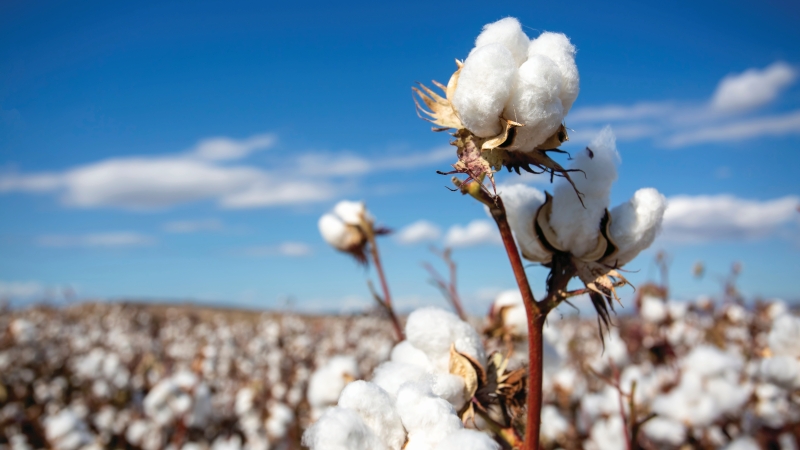New Pima Cotton Cultivars Show Improved Resistance to Fusarium Race 4
Pima cotton, the predominant variety of cotton grown in California, is ideal for making premium fabrics for clothing and bed sheets. But Fusarium wilt disease can devastate a cotton crop. The soil-borne fungus is responsible for crop losses in several production regions in the U.S. and worldwide.
Researchers with the University of California, Davis, the USDA Agricultural Research Service, and other groups have been working for nearly 18 years to identify sources of resistance to a specific strain of Fusarium, known as race 4, by field testing plant materials with different genetic backgrounds. They have now developed three Pima cotton cultivars that show improved resistance to the disease – a big step toward creating commercial varieties for cotton growers and producers.
Bob Hutmacher, a physiologist in plant sciences at UC Davis and a Cooperative Extension cotton specialist, has been working on various aspects of this research since 2003.
Hutmacher says various strains of Fusarium wilt disease have been a problem in California for decades. The newest Fusarium race 4 strain was initially discovered in the San Joaquin Valley in the early 2000s and has since been detected in cotton fields in other U.S. cotton production regions, including El Paso, TX, and Las Cruces, NM. In severely infected plants, leaves wilt and drop, resulting in bare stems and very limited yield production.
Disease Could Mean Higher Prices
Crops impacted by the disease could spell trouble for consumers. Hutmacher says when production suffers, that could potentially lead to higher costs for cotton products.
“It can be a very damaging disease in terms of greatly reducing yields, and to some extent, even making it uneconomical for production of cotton as a crop in a region,” Hutmacher said. “As it becomes more difficult to produce something economically, the only way to keep producing it is to have the cost of everything go up.”
Hutmacher says this type of fungal disease can likely survive in soil for decades and can easily move from place to place if infected soil particles get stuck on tractor tires, boots, or shovels. Planting resistant varieties can help prevent the spread.
“It’s probably the most environmentally acceptable way of trying to figure out how to control a disease,” Hutmacher explained. “You’re basically looking for a solution that is already there and available in the plant’s genetics, and so it’s not dependent on a chemical, which may or may not have some other impact on the environment.”
This collaborative project also included work by researchers from UC Agriculture and Natural Resources and the Center of Genomics and Bioinformatics at Uzbekistan Academy of Sciences. Together, they will make genetic plant material – including seeds of the newly developed Pima cotton – available to cotton breeders, geneticists, and researchers. The hope is that breeders and seed companies can create a product that will eventually make it onto farms and fields.
“That’s the next step you wish for with all these types of materials,” said Hutmacher. “Make them available, demonstrate that there is improved resistance to a disease, and then the companies can pick it up from there and turn it into a variety with good yields and good fiber quality characteristics, so it has a place in the market.”








